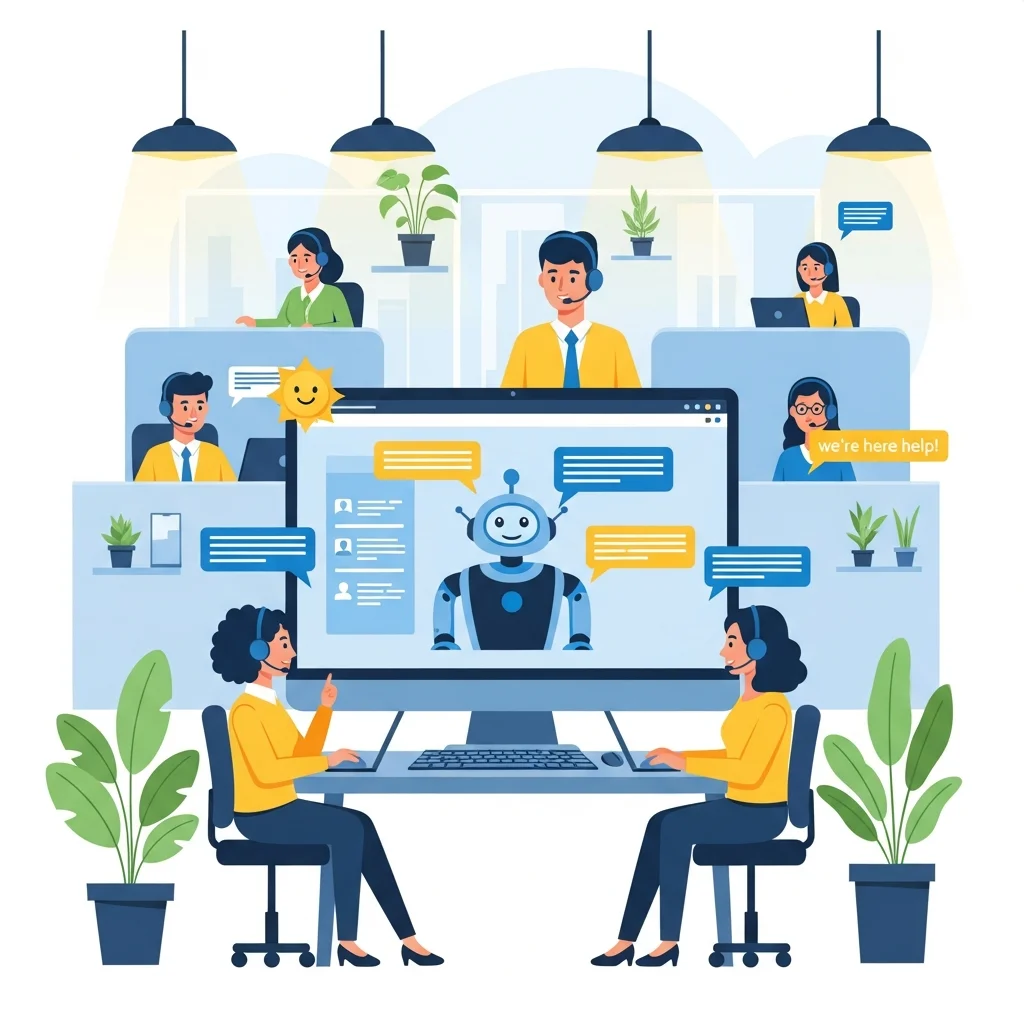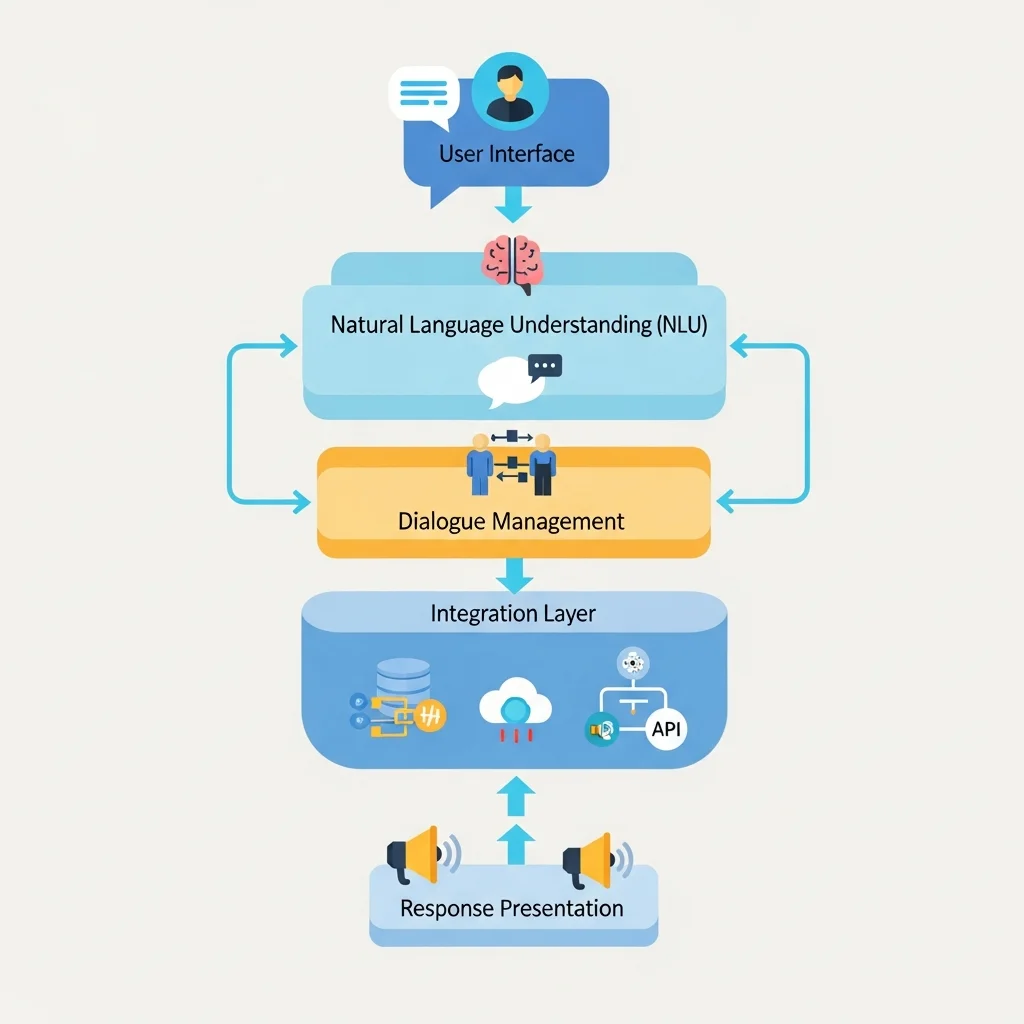Chatbots and virtual assistants have become core technology for digital interaction in customer service, business processes and consumer apps. This knowledge-base article takes an encyclopaedic look at what these systems are, how they work from a technical perspective, the different types that exist and the developments that will shape the coming years.
Overview
Chatbots and virtual assistants are software systems that communicate with users through natural language, usually in text or speech. They combine language technology, knowledge representation and often generative AI to understand questions and provide appropriate answers or actions.
Key take-aways in this article:
Clear definitions of chatbots and virtual assistants
Underlying technology such as NLP, LLMs and dialogue management
Types of chatbots, from rule-based systems to agentic AI assistants
Common business and consumer applications
Benefits and risks, including privacy and reliability
Relevant concepts for architecture and implementation
Definitions and scope
A chatbot is a software application designed to communicate with users via natural language. Interaction usually takes place through text in a web chat, messaging app or customer portal. The chatbot interprets incoming messages and provides automated answers or performs actions such as looking up information or initiating a process.
A virtual assistant is a broader category. It is a digital agent that uses natural language, carries out tasks, remembers context and often controls multiple applications, services or devices. Examples include voice-controlled assistants in smartphones and smart speakers, as well as organisation-specific assistants that can query internal systems.
Although the terms are often used interchangeably, the practical distinction is as follows. Chatbots are generally task-oriented with a relatively narrow domain such as customer service or an FAQ. Virtual assistants have a wider remit, can support multiple domains, more often work multimodally (text, speech, sometimes image) and focus on longer interactions and personal context.
Both types of system make use of techniques from artificial intelligence. The main building blocks are natural language processing, knowledge representation and, in recent generations, large language models. As a result, modern chatbots and assistants can process freely formulated questions, recognise varied phrasings and generate more coherent answers than earlier generations, which relied mainly on fixed decision trees.
Technical operation and architecture
The technical architecture of chatbots and virtual assistants typically consists of several layers. These layers vary per platform and implementation, but the same concepts recur.
The first layer is the interface, where the user communicates, such as a web widget, mobile app, messaging channel or voice interface. Text is entered here or speech is converted to text by speech recognition.
The second layer is natural language understanding. The user input is analysed here. Classic systems use intent classification and entity recognition to determine what the user wants and which relevant data appear in the sentence. Modern systems often employ large language models, for example generative models that can directly formulate an interpretation and a conceptual answer.
The third layer is dialogue management. This component tracks the state of the conversation, remembers previous questions and answers and decides what logically follows. In traditional designs this is done with explicit state machines or decision trees. In newer generations, dialogue management is increasingly performed partly or entirely by the language model, sometimes combined with explicit rules so the system remains both flexible and controllable.
The fourth layer is the integration with external systems. Chatbots and virtual assistants often need to fetch data or perform actions in other applications such as CRM, ticketing, ERP, knowledge bases or IoT devices. This is done via API connections and integration layers. In modern architectures this is often combined with retrieval-augmented generation, where the language model first retrieves relevant documents or data sources and then uses this context to formulate an answer.
The fifth layer is the response and presentation. After the system has determined the intent, executed any actions and gathered the necessary information, it generates a reply. Classic systems do this using templates, filling fixed text with variables. Generative systems let the language model compose the answer itself based on context. For voice-controlled assistants this answer is then converted from text to speech.
A popular design approach is a modular architecture in which the language model is treated as one component among other services. This makes it possible to deploy different models, for example for different languages, for specific tasks or for heavily regulated domains. At the same time a modular setup helps to arrange security, logging and monitoring properly, because each layer has its own responsibilities and controls.
Types of chatbots and virtual assistants
Chatbots and virtual assistants can be classified by their architecture, their purpose or their level of autonomy. A first distinction is between rule-based chatbots and AI-based chatbots. Rule-based systems work with predefined dialogues and recognition patterns. They respond well to the scenarios for which they were designed but struggle with unusual phrasing and unexpected questions.
AI chatbots use machine learning and especially natural language models to deal with language more flexibly. A modern variant is the generative chatbot, which uses large language models to formulate answers rather than relying solely on fixed templates. These systems can generalise better and therefore answer questions that did not literally occur in their training data, provided the required knowledge is available in the context or the model.
A second classification is based on the application domain. There are service bots for customer service and support, informative bots that grant access to manuals and knowledge bases, transactional bots that perform concrete actions such as booking appointments or changing data, and guiding assistants that walk users through a process, for example when filling in forms or carrying out complex configurations. Virtual assistants can combine several of these roles, offering both information and action-oriented behaviour in one interface.
A third category distinguishes single-purpose assistants from so-called agentic AI systems. A single-purpose assistant mainly reacts to direct user queries. Agentic systems possess an internal goal structure, can plan sub-goals, execute multiple steps and use external tools along the way. In practice this means that, within predefined limits, an agentic virtual assistant can decide which actions are required to complete a user task rather than having each step initiated by the user.
From an implementation perspective there is also a difference between open-domain and closed-domain systems. Open-domain chatbots and assistants aim to handle questions on almost any topic, such as public generative AI chatbots. Closed-domain systems are optimised for a specific company, process or discipline, for example an assistant for internal HR queries or a chatbot for a healthcare institution. Closed-domain assistants often combine a generative model with strict delimitation of available sources so answers remain relevant to the domain and easier to control.
Applications, benefits and points of attention
Chatbots and virtual assistants are used across a wide range of sectors. In customer service and sales they act as the first point of contact, answer frequently asked questions and route more complex issues to human staff. In internal corporate environments assistants are used for IT support, HR queries, knowledge management and automating standard documents. There are also specialist variants in healthcare, education, financial services and government, where they help unlock complex information and guide users through regulations or procedures.
Major benefits are scalability and availability. A chatbot or virtual assistant can handle thousands of conversations simultaneously and is typically available 24 hours a day. This reduces waiting times and increases the accessibility of information. A well-designed assistant also delivers consistent answers because the same knowledge sources and business rules are used regardless of who contacts the organisation or when. For organisations this provides better insight into frequently asked questions and bottlenecks, because all interactions can be logged and analysed digitally.
At the same time there are clear points of attention. Depending on its configuration, a generative assistant can make mistakes or produce inaccurate answers. This phenomenon is often called hallucination, where the model generates plausible-sounding but incorrect information. To mitigate this risk, retrieval techniques, source citations and validation rules are increasingly used so answers are based on reliable data. In critical domains such as medical or legal contexts additional human oversight is essential and limits are placed on the assistant's autonomy.
Privacy and information security also play a major role. Chatbots and virtual assistants often process personal data and confidential business information. Measures such as data encryption, clear retention periods, access control, separate environments for testing and production and clear agreements with any AI model or cloud providers are required. Legal frameworks such as privacy legislation and forthcoming AI regulations determine how transparent organisations must be about the use of chatbots and virtual assistants and which risk-management processes are mandatory.

What exactly is a chatbot and how does it differ from a virtual assistant?
A chatbot is software that communicates with users via text or speech to perform specific tasks such as answering questions or guiding simple processes. A virtual assistant is usually broader in scope, supports multiple tasks and can control different applications or devices. In practice, a virtual assistant is viewed as a more general, context-aware and often more personal form of chatbot.
Which techniques are used to enable chatbots and virtual assistants to understand language?
Natural language processing and machine learning are employed for language understanding. This includes intent classification, entity recognition and, in modern systems, large language models that have learned patterns from vast amounts of text. These models can interpret free-form phrasing, recognise synonyms and restructure sentences, making the interaction feel more natural. In many implementations language understanding is combined with retrieval techniques to fetch relevant documents or data sources before an answer is formulated.
Are all modern chatbots based on generative AI?
Not all modern chatbots use generative AI, although the share of generative systems is growing rapidly. Many organisations still deploy rule-based or hybrid bots, for example when processes are strictly predefined or when tight control over the wording of answers is required. In hybrid models generative AI is used for flexible language production, while rules and templates safeguard the content and order of steps.
How are chatbots and virtual assistants connected to existing business software?
Integration usually takes place via API interfaces and integration layers. The assistant sends a request to a backend service that, for example, retrieves customer data from a CRM, creates a ticket or starts a workflow in another system. A clear separation between the dialogue layer and business logic keeps the architecture maintainable and scalable. For more complex environments integration platforms or microservices are often used to expose the various systems in a consistent manner.
What benefits does a chatbot provide for customer service departments?
A well-designed chatbot can autonomously handle a substantial portion of standard queries, giving human agents more time for complex or emotionally charged issues. This shortens waiting times, increases accessibility and ensures a uniform level of service. In addition, the data from conversations provide insight into frequently asked questions, recurring problems and potential improvements in products or information provision.
Are chatbots and virtual assistants safe to use with sensitive information?
Whether a chatbot is safe depends on its setup and the technology chosen. With sensitive information, encryption, strict access control, clear data limitations and carefully selected hosting are essential. Organisations must also consider how external model providers handle data, for instance whether user input is used for further training. Through deliberate architectural choices and contractual agreements, chatbots and virtual assistants can be deployed safely, but this requires explicit attention and periodic evaluation.
What role do agentic AI assistants play in the latest generation of systems?
Agentic AI assistants are an emerging category in which the assistant not only responds to questions but also plans steps autonomously to reach a goal. They can, for example, call multiple tools, check intermediate results and initiate follow-up actions without each step being spelled out by the user. This boosts productivity but also imposes higher demands on supervision, logging and guardrails to prevent unwanted actions. Design and governance therefore often incorporate clear safety rails within which the agentic assistant may operate.



